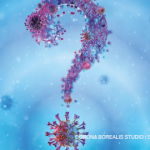 ACR CONVERGENCE 2020—A scientific session on Sunday, Nov. 8, focused on vaccine prospects in COVID-19. Dan Barouch, MD, PhD, director of the Center for Virology and Vaccine Research at Beth Israel Deaconess Medical Center and the William Bosworth Castle Professor of Medicine at Harvard Medical School in Boston, shared his insights about vaccine development across the field, reported on data concerning his lab’s contributions and fielded questions from meeting participants.
ACR CONVERGENCE 2020—A scientific session on Sunday, Nov. 8, focused on vaccine prospects in COVID-19. Dan Barouch, MD, PhD, director of the Center for Virology and Vaccine Research at Beth Israel Deaconess Medical Center and the William Bosworth Castle Professor of Medicine at Harvard Medical School in Boston, shared his insights about vaccine development across the field, reported on data concerning his lab’s contributions and fielded questions from meeting participants.
R&D of the Ad26 Vaccine
Dr. Barouch’s lab began working on a vaccine for SARS-CoV-2 in early January, just after the viral gene sequence was publicly released. From the initial clinical data, the researchers thought it highly likely that an effective vaccine could be feasible. Early reports indicated that most people who get the virus recover and completely clear the virus. Unlike some other viruses, SARS-CoV-2 has limited strain diversity. And prior data already strongly suggested the appropriate antibody target, the COVID-19 spike protein. All these factors made it likely that a successful vaccine could be developed.
At the same time, the team began research to address fundamental questions related to COVID-19 immunology that would prove important for vaccine development for programs worldwide. Was there a natural immunity that would protect individuals who had recovered from COVID-19 if they were re-exposed? Could a vaccine theoretically induce immunity? If so, what were the “correlates of protection,” the specific markers that could be measured to indicate an individual would be protected from the disease if exposed?
Dr. Barouch’s lab helped address these key questions, in work published at the end of May, through an animal model using rhesus macaques. In their first study, they demonstrated proof that natural protective immunity occurred after virus exposure.1
“We think that is very important for the vaccine field, because it is much easier to develop a vaccine for a virus that has natural protective immunity, compared to a virus for which there is no protective immunity,” said Dr. Barouch.
For its second paper, the team developed an early prototype vaccine study, also in macaques. Here they demonstrated for the first time that there was a potential immune correlate; the neutralizing antibody titers introduced by the vaccine inversely correlated with peak viral loads.2 They reasoned that if this correlate was generalizable to humans and to other vaccines, it could be a powerful tool to accelerate vaccine development more broadly.
With industry support from Johnson & Johnson, Dr. Barouch’s lab developed a COVID-19 vaccine based on an adenovector. This deactivated adenovirus can insert DNA from the COVID-19 spike protein into cells, which can then make the protein and provoke an immune response.3 This same vector platform has been used to manufacture candidate vaccines for HIV, Zika virus, Ebola virus, RSV and others. A phase 3 trial of their vaccine (Ad26.COV2.S) is underway, with results expected sometime next year.



